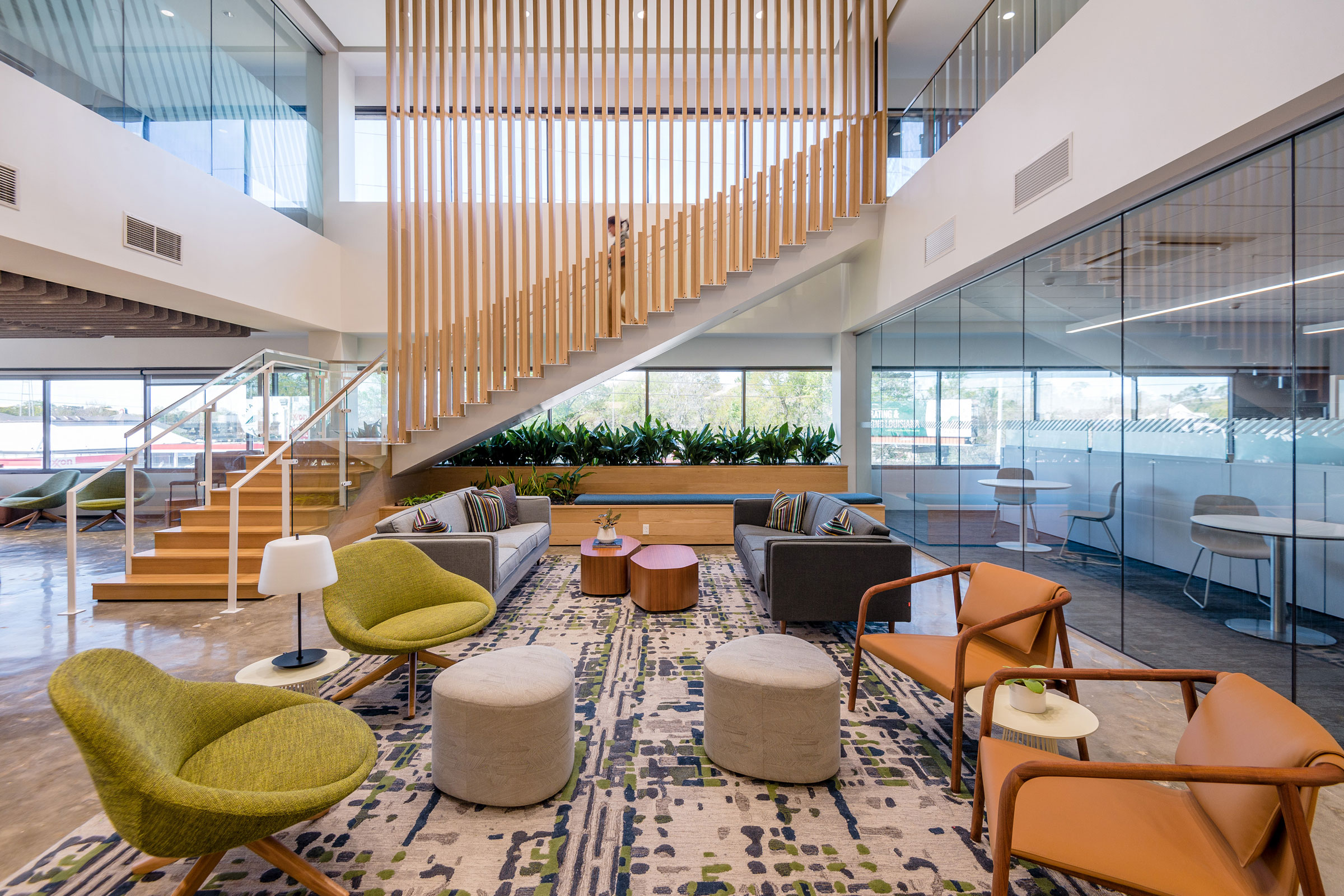Story at a glance:
- EskewDumezRipple renovated a 1980s building to consolidate departments, improve thermal comfort, and provide views.
- The design team opened up the office to allow for more natural daylight, views, and connection among staff.
- A new, high-performance Dedicated Outdoor Air System provides more than twice the level of fresh air of standard practice.
Bright, updated colors and views everyone can enjoy are two clear successes of the Louisiana Workers’ Compensation Corporation (LWCC) renovation. Before EskewDumezRipple stepped in, the private nonprofit’s headquarters was made up of eight isolated floors with private offices and many high-walled cubicles without views.
“All of the offices were on the perimeter. It was really closed off and confusing from a wayfinding perspective,” says Mark Hash, architect at EskewDumezRipple.
The design team pulled everything off the perimeter so occupants could enjoy the ribbon window that runs all the way around the building. “Initially they had some bullpens on the interior with a core. We wanted to invert that relationship,” Hash says.
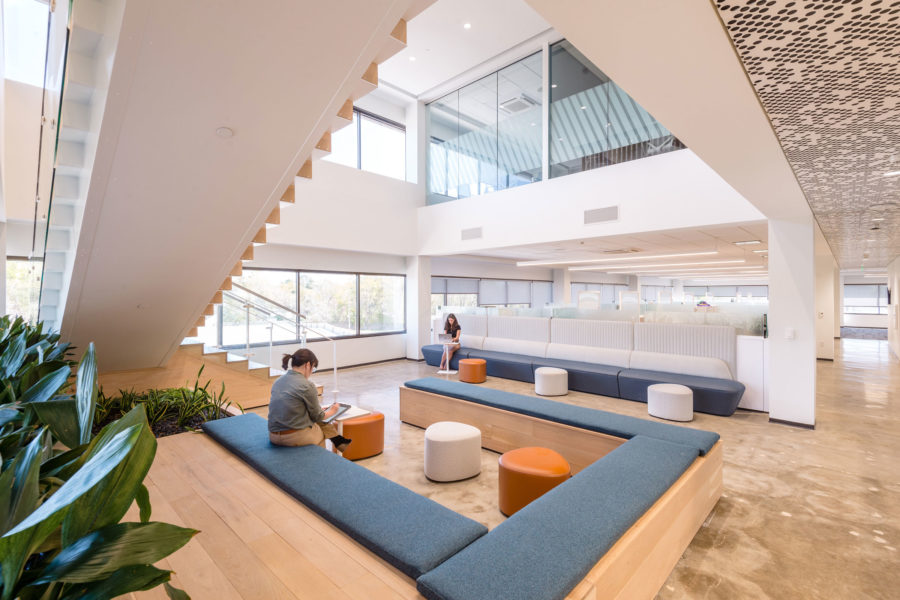
The renovated facility inserts a succession of double-height, daylight-filled social spaces with inviting stairs that draw employees up and through the building. Instead of locating private offices at the windows where they block views, the inverted design features private offices with glass walls pulled to the center so everyone can see. Desks are pulled back at least five feet from windows to provide an outboard circulation path that also ensures thermal comfort and reduces glare. Photo by Mantese
EskewDumezRipple moved offices to the core and open spaces to the perimeter to maximize sightlines across the office and bring in natural daylight and views. It made wayfinding much more intuitive for people and made staff feel more connected, too. “It was that simple of a move,” Hash says.
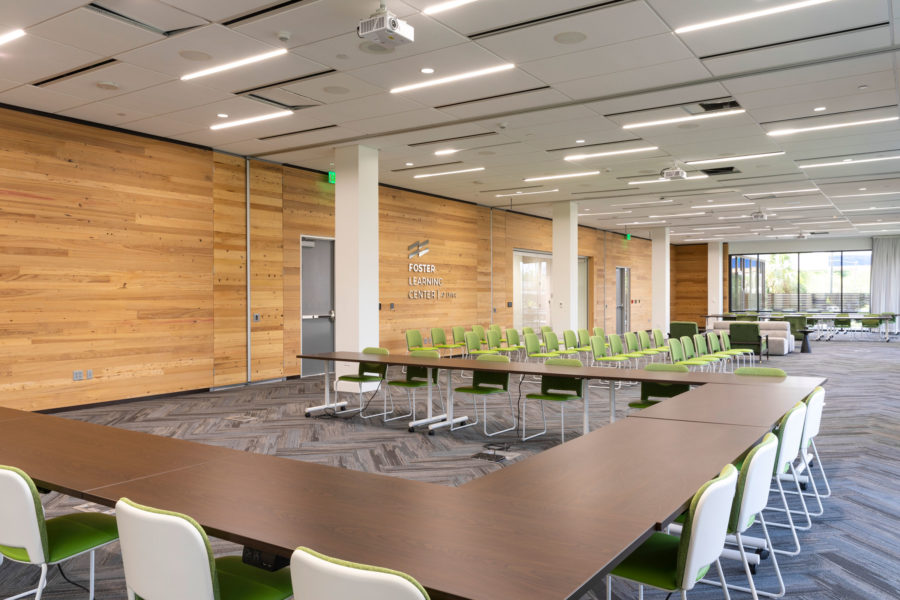
Inside the renovated LWCC project, with new shared spaces and plentiful natural light. Photo by Sara Essex Bradley
The new design changed the ratio of offices to workstations, providing more open area workspaces where before there were more private offices. While it took some convincing to get people comfortable with that change in their work environment, the tradeoff—natural light and views—was ultimately worth it, Hash says. Plus, they now had room for new amenities like private chat rooms, small meeting rooms, and beautiful communal spaces.
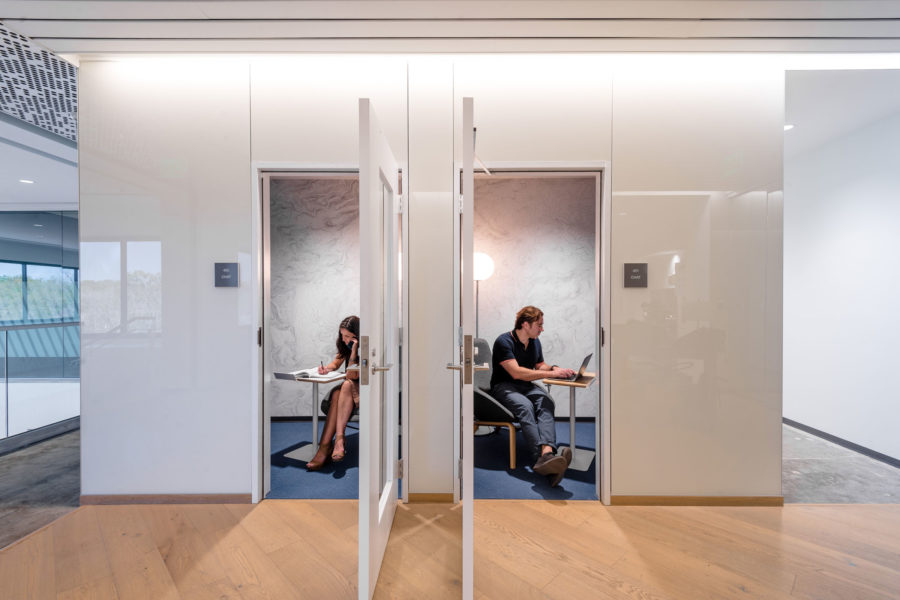
Photo by Mantese
A new, impressive set of stairs also sets the tone for the space. In the old design, LWCC’s footprint was peppered throughout the building with other tenants sprinkled in, Hash says.
“Part of our goal was to consolidate departments and put them in adjacencies where they work better, where they have more immediate relationships, and overall to consolidate LWCC’s footprint on consecutive floors.”
The team moved all the meeting rooms and large programs to the ground floor and stacked the other departments on subsequent floors, with executives on the eighth floor. Then, Hash says the opportunity presented itself to connect those floors with stairs. “You can take those stairs and never have to get into the elevators. It promotes physical connection, it promotes sightlines, and it promotes health and wellness,” he says.
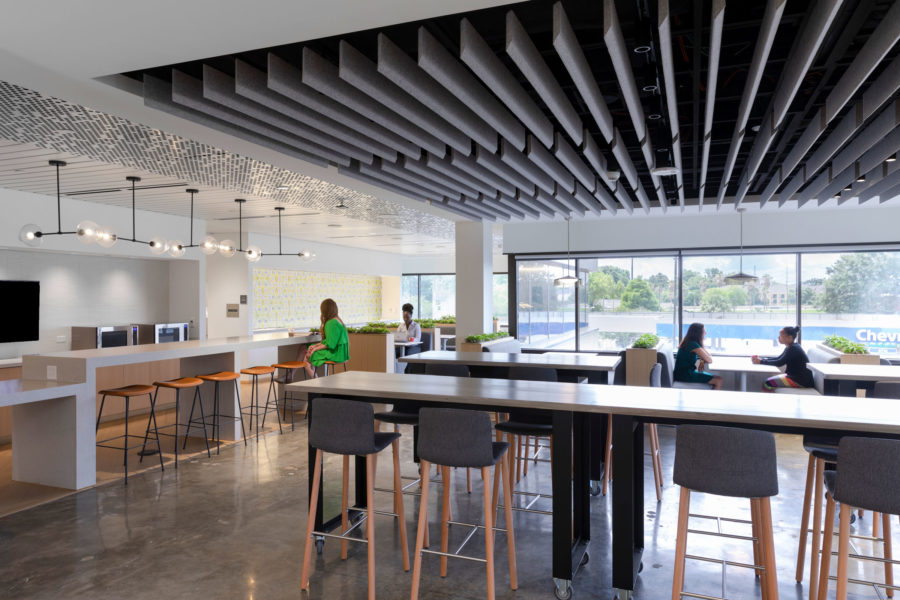
The design team’s peer-reviewed research proved higher levels of air quality, better thermal comfort, and access to nature views, and design choices that promoted physical activity and access to healthy food all contribute to worker health and productivity. Photo by Sara Essex Bradley
They chose white oak for the staircase to complement other light color materials in the project. “The woods offered a nice contrast and also warmed up the space.”
Overall the team updated the design with a mix of colorful and natural materials—a departure from the design’s previous dark and dated interior. They added interior plantings and landscaping in communal spaces as part of the biophilic design and opened the office up to the exterior with views to the adjacent landscape and tree canopy beyond. “We reworked the base of the building to create a terrace with various outdoor spaces. That was heavily landscaped.”
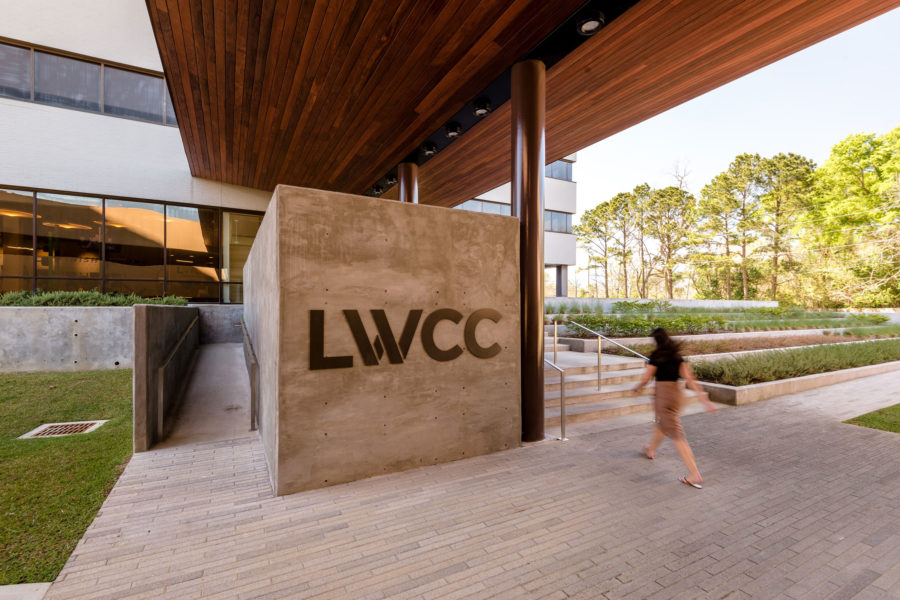
EskewDumezRipple renovated the LWCC project. Photo by Mantese
Hash says the outdoor areas were also designed to be more engaging. “We were trying to create a better outdoor experience. We tried to create different scales of space and make it a little bit more usable by shading the landscape.”
As part of the project, the design team conducted a thermal comfort study early on that considered replacing the glass versus replacing the mechanical systems. They wanted to know what would be more efficient in terms of cost and thermal comfort.
“We didn’t really have the budget to replace the glass, but the open office planning strategy allowed us to do two things. As long as we kept people at least five feet away from the existing envelope, they would be in range of thermal comfort with an upgraded mechanical system. That paired nicely with our planning strategy of not having offices on the perimeter. We kept that five-foot rule all the way around, keeping them off the perimeter, so we were able to achieve natural daylight and views and thermal comfort with an upgraded, better performing HVAC system.”
The new HVAC system was probably the biggest contributor to the project’s sustainability. The building’s existing heating and cooling central plant is married with a novel high-performance Dedicated Outdoor Air System with Energy Recovery Ventilation, providing more than twice the level of fresh air of standard practice, while a VRF space conditioning system offers a high level of individual temperature control.
Higher ventilation rates combined with the firm’s commitment to low and no-VOC materials is designed to result in much better indoor air quality. “It looks simple, but it was a very complicated thing,” Hash says. “It was a 1980s era building that really had never undergone any kind of meaningful renovation.”

